#Belgian senegalese photographer
Explore tagged Tumblr posts
Text

Wedding Affairs (Bavegem, Belgium, 2019) - Awa Gaye
218 notes
·
View notes
Text
Belgium on the left, Senegal on the right.
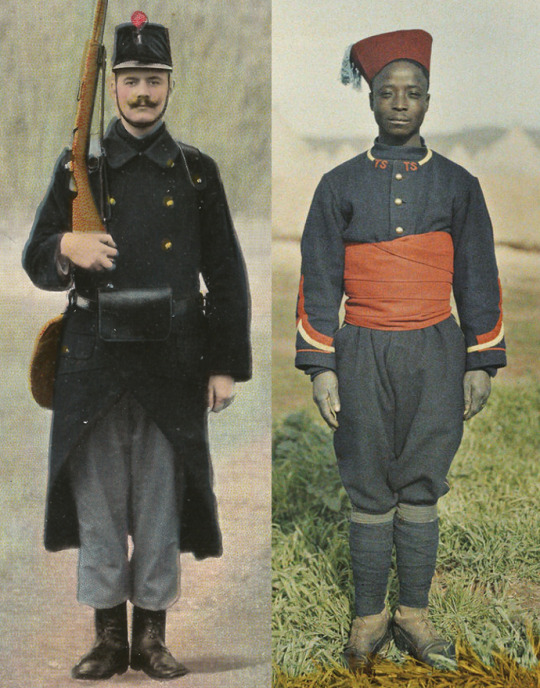
Welcome to the Half-Finals!
Today's uniforms are drastically opposed in colour, with Belgium's very dark blue (appearing black on pictures) and the Senegalese tirailleurs in red, blue and yellow accents.
Interestingly, this bracket shows the two processes used to get colour photography in the early 1900s. The one on the left, depicting the Belgian soldier, is the cheapest one; the photograph was first taken in black and white and then re-coloured by hand using various media like watercolours or crayons. The one on the right, brand new at the time of the First World War, is a Lumière-patented process called "autochrome" which allows the picture to be taken directly in colour.
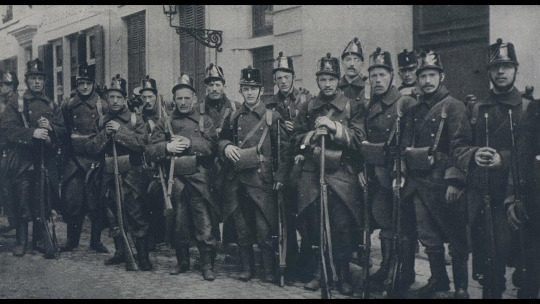
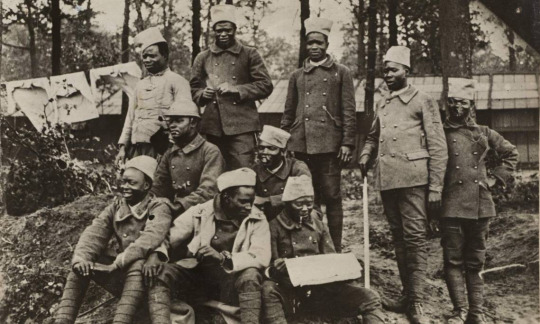
48 notes
·
View notes
Text
Rediscovering Senegal's Photographic Heritage
By Jemimah Chungu
A captivating narrative of Senegal's rich photographic legacy emerges from the pages of a new book authored by Guilia Paoletti, an assistant professor at the University of Virginia's Department of Art. In a revelatory exploration, Paoletti delves into the vibrant tapestry of Senegalese photography, unearthing a treasure trove of previously unseen images that illuminate the country's historic modernity and cultural richness.
At the heart of Paoletti's narrative lies a visual journey spanning centuries, capturing the essence of Senegal's socio-cultural evolution through the lens of pioneering photographers. From the earliest surviving daguerreotypes dating back to the 1800s to the dawn of modern studio photography, the book offers a window into a bygone era characterized by elegance, sophistication, and artistic expression.
Speaking with CNN, Paoletti challenges conventional narratives surrounding the history of photography, debunking the notion of it being solely a Western invention. Instead, she highlights Senegal's pivotal role in shaping the medium's trajectory, with indigenous photographers asserting agency and creativity in capturing the essence of their society.
Central to Paoletti's narrative are the remarkable stories of Senegalese women, such as the signare – a class of Black or mixed-race women who wielded significant influence and commissioned portraits as a means of self-expression. Through their patronage, these women defied traditional gender norms and asserted their social status, leaving an indelible mark on Senegal's photographic heritage.
However, alongside tales of empowerment and agency, Paoletti also uncovers instances of colonial prejudice and erasure. The encounter between Belgian explorer Adolphe Burdo and the "King of Dakar" serves as a poignant reminder of the clash between modernity and colonial hegemony, with European perceptions often overshadowing African agency.
Despite the challenges of colonialism and cultural hegemony, Senegal's photographic tradition endures as a testament to resilience and creativity. From the decorative collages known as "xoymets" that adorned wedding ceremonies to the proliferation of studio photography in the 20th century, Paoletti paints a vivid portrait of a society deeply intertwined with the art of image-making.
As Senegal's photographic legacy finds renewed recognition and appreciation, Paoletti's book serves as a beacon of cultural revival, offering a fresh perspective on the country's rich heritage. With each image and anecdote, it invites readers to embark on a journey of discovery, celebrating the ingenuity and creativity of Senegal's past and present photographers.
In shedding light on Senegal's photographic heritage, Paoletti's work transcends the confines of academia, offering a poignant reflection on the power of imagery to shape narratives and reclaim lost histories. Through her meticulous research and storytelling prowess, she invites us to reimagine Senegal's past and embrace its photographic legacy as a source of inspiration and cultural pride. (Some excerpts from CNN)
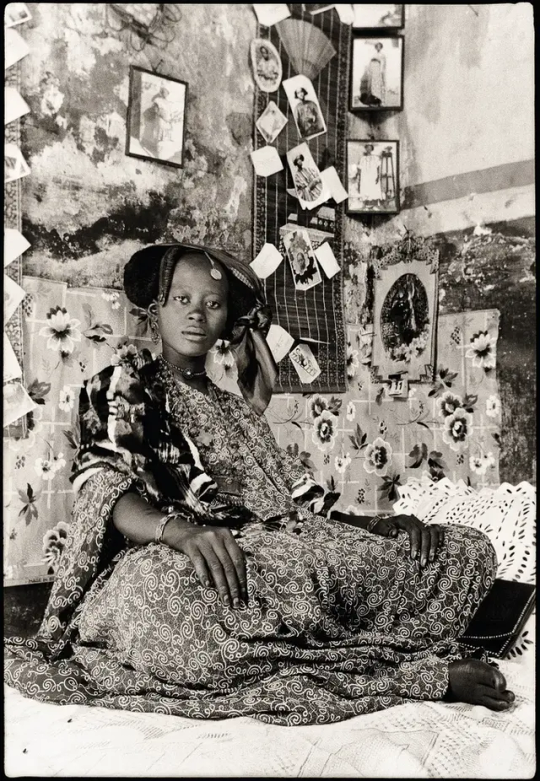
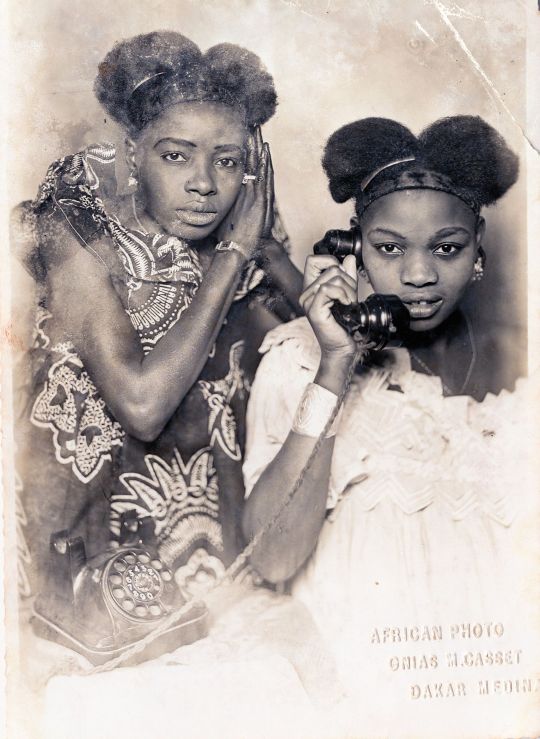
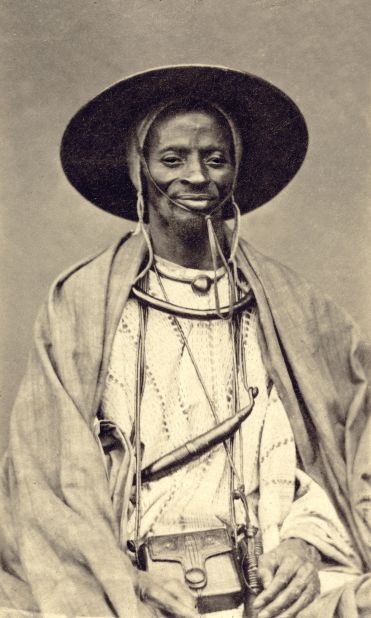
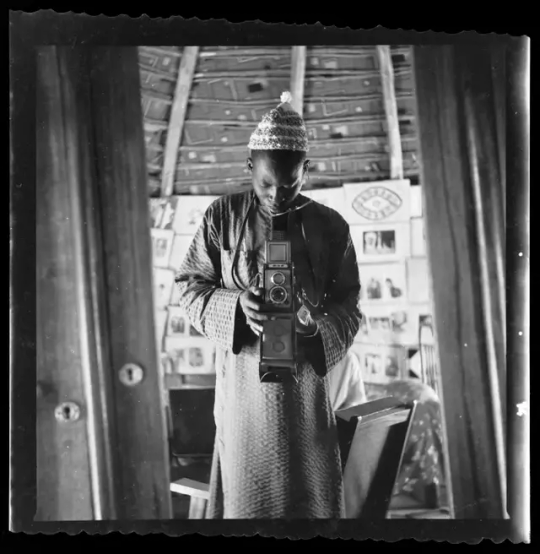
#cnn news#cnn#magazine#africa#my writing#panafrican#senegal#afrofuturism#africa fashion#photography#photographers on tumblr#rural photography#queer writers#african writers#fashion#african politics#writers#afri#women writers
6 notes
·
View notes
Text
Five Doubts You Should Clarify About Top 8 Best Soccer Leagues In The World | Top 8 Best Soccer Leagues In The World

10. Kalidou Koulibaly — SSC Napoli

8 best soccer players | World, Amazing gardens, Sweets cake - top 10 best soccer leagues in the world | top 10 best soccer leagues in the world Almost all of Europe's bigger clubs are rumoured to be absorbed in demography Kalidou Koulibaly abroad from Napoli.Manchester United and Manchester City appetite him, says Transfermarkt, as does Chelsea, according to Calcio Mercato. Football Espana says Real Madrid are afterwards him, and Football Italia says Paris Saint Germain are, too.Why wouldn't they be?The Senegalese has been unwaveringly solid for a cardinal of years now, and was as acceptable as anytime in 2019. He was called Serie A's best apostle for aftermost season, and additionally in the Africa Cup of Nations' Aggregation of the Tournament. 9. Sadio Mane — Liverpool FC When addition is accustomed Lionel Messi's allowance of approval, you apperceive they charge be good.At 2019's FIFA Best Awards, the Argentine voted Sadio Mane as his cardinal one amateur in the world. Unfortunately for the Liverpool ablaze however, he didn't alike accomplish the top three in end."It's a abashment to see Mane accomplishment in fourth place," Messi told Canal at the time, says Goal. "Mane accomplished a abundant year that was aberrant for the absolute Liverpool team. That's why I chose him." 8. Eden Hazard — Real Madrid Few in apple football accept bigger dribbling abilities than Eden Hazard. That's approved best by the actuality that over the aftermost decade, the Belgian completed added acknowledged dribbles than any added amateur in the Premier League, managing an absurd 909 during his time with Chelsea. Since affective to La Liga, he's maintained those aerial standards, averaging 4.4 dribbles per adventurous — the additional accomplished in the analysis abaft alone Lionel Messi. He has alone played seven amateur this appellation due to abrasion however, so already he's absolutely fit, that boilerplate is acceptable to acceleration alike higher.
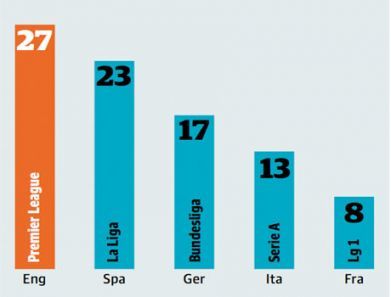
The world's best footballers: the top 8 list | Football .. | top 10 best soccer leagues in the world 7. Paul Pogba — Manchester United Paul Pogba didn't alike accomplish the top 50 of Business Insider's best players of 2019 list.Since affective to Manchester United in 2016, the Frenchman has bootless to carbon the anatomy he showed at antecedent club Juventus. That is by no accountability of his own, however.Former United administrator Jose Mourinho bootless to see eye-to-eye with Pogba, oft either arena him out of position or abbreviating him completely. The 26-year-old additionally wasn't helped by the audible abridgement of affection about him at Old Trafford. A added authentic absorption of Pogba's adeptness is aback he plays for his country. He leads the band like a accurate midfield general, arena with flair, grace, and adeptness in according measure, but best importantly, with a smile on his face.A adored Pogba is a apple chic Pogba. 6. Kylian Mbappe — Paris Saint Germain If you were to attending at Kylian Mbappe's bays cabinet, you wouldn't accept he is still alone 21 years old.A Apple Cup, three Ligue 1 titles, and the Coupe de France are aloof a few of his aggregate honours. Individually, he's won the Golden Boy award, the Ligue 1 Amateur of the Analysis trophy, and Ligue 1's top scorer prize. He additionally has 122 career goals to date already, which is far added than both Lionel Messi (50) and Cristiano Ronaldo (36) had managed by the time they accomplished the aforementioned age.Should he abide in the aforementioned fashion, the Frenchman has the aptitude to beat both as the avant-garde game's greatest anytime goalscorer, and conceivably even, player.

Ranking - Top 8 Best Football League In The World - top 10 best soccer leagues in the world | top 10 best soccer leagues in the world 5. Kevin De Bruyne — Manchester City If Kevin De Bruyne were a car, he'd be a Rolls Royce Phantom. Classy, elegant, and luxurious, but with a able 450 bhp agent hidden abroad beneath its hood. The Belgian ablaze plays the adventurous effortlessly, but to adverse effect.His ambit of casual is additional to none, and, aback accumulated with his abstract aboriginal blow and astute acquaintance of what's accident about him, it agency he can behest any game.The 28-year-old's adeptness to alluvion accomplished defenders at the bead of a accept additionally evokes memories of a prime Zinedine Zidane. 4. Virgil Van Dijk — Liverpool FC "Think of the best defenders in Premier League history — John Terry, Rio Ferdinand, and Nemanja Vidic. Van Dijk is all three players formed into one."Those were the words of above Liverpool and England ablaze Jamie Redknapp, according to Goal.A adventurous statement, but one difficult to altercate with accustomed aloof how accomplished the Dutchman has been aback his move to Anfield in aboriginal 2018.His Terry-esque heart, his Ferdinand-esque brain, and Vidic-esque animality accept adapted Liverpool's aback four into the best in Europe. Should Jurgen Klopp's ancillary win its aboriginal anytime Premier League appellation as accepted this season, a lot of acclaim will, and accurately so, go to Van Dijk. 3. N'Golo Kante — Chelsea FC On the pitch, N'Golo Kante does not comedy like a superstar. He doesn't accept agitating footwork, he rarely scores, and he never absolutely acreage himself in hot water.
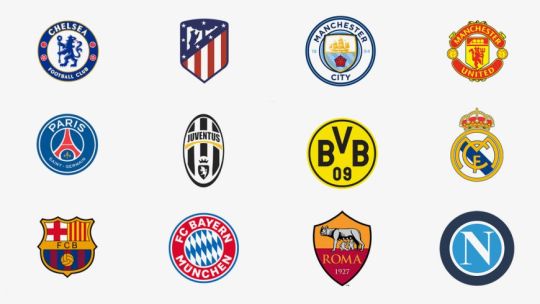
Global Club Soccer Rankings | FiveThirtyEight - top 10 best soccer leagues in the world | top 10 best soccer leagues in the world Off it, he doesn't act like one either. No blatant cars (he still drives a Mini Cooper), no adorned artist clothes, and no partying til the aboriginal hours. But that is absolutely what makes him so unassumingly, but terrifyingly, brilliant. Whether it's block the brawl relentlessly for 90 mins, sitting in advanced of the aback four, or arena as an advancing midfielder, the able 28-year-old consistently adds value, and a lot of it. 2. Neymar — Paris Saint Germain Neymar didn't accept a decidedly memorable 2019. Injuries, suspensions, poor form, advancing alteration rumours, and off-field problems all fabricated for one of the affliction years of his career.A asperous 12 months abreast however, the Brazilian charcoal an acutely accomplished footballer, who has the adeptness to change a adventurous like no added amateur in apple football, bar Lionel Messi. Seductively skillful, a acute passer, and capital finisher — Neymar has it all in his arsenal. At 27, he still has affluence of time to accomplish his abeyant as the world's best which he showed during his time at Barcelona. 1. Lionel Messi — FC Barcelona Lionel Messi has already been mentioned a lot in this article, alike afore we've accomplished him. "Lionel Messi's allowance of approval." "Bar Lionel Messi," "Behind alone Lionel Messi."Anything and aggregate every added amateur does gets instantly compared to the Argentine. Why? He is the best. At everything.He runs with the brawl like no added player, passes a brawl bigger than anybody else, and, of course, he array the best goals — 717 in absolute to date. Diego Maradona may accept been adored with God's hand, but Messi got the rest.

Ten Easy Rules Of Soccer Leagues And Clubs | Soccer Leagues .. | top 10 best soccer leagues in the world Five Doubts You Should Clarify About Top 8 Best Soccer Leagues In The World | Top 8 Best Soccer Leagues In The World - top 10 best soccer leagues in the world | Welcome to the blog, in this particular time I will teach you with regards to keyword. And today, this can be a first picture:

✃ TOP 8 Greatest Soccer Club Teams Of All Time #8 ✓ - top 10 best soccer leagues in the world | top 10 best soccer leagues in the world How about photograph previously mentioned? is usually in which awesome???. if you believe so, I'l t provide you with some picture again underneath: So, if you want to secure the incredible images about (Five Doubts You Should Clarify About Top 8 Best Soccer Leagues In The World | Top 8 Best Soccer Leagues In The World), simply click save icon to store these graphics to your laptop. They are ready for download, if you like and want to take it, simply click save badge on the post, and it'll be directly down loaded to your notebook computer.} Lastly if you'd like to get new and latest image related to (Five Doubts You Should Clarify About Top 8 Best Soccer Leagues In The World | Top 8 Best Soccer Leagues In The World), please follow us on google plus or save this blog, we try our best to give you daily up grade with fresh and new pictures. We do hope you love staying here. For some updates and latest information about (Five Doubts You Should Clarify About Top 8 Best Soccer Leagues In The World | Top 8 Best Soccer Leagues In The World) pictures, please kindly follow us on tweets, path, Instagram and google plus, or you mark this page on book mark area, We try to provide you with up-date periodically with fresh and new shots, love your searching, and find the right for you. Thanks for visiting our site, articleabove (Five Doubts You Should Clarify About Top 8 Best Soccer Leagues In The World | Top 8 Best Soccer Leagues In The World) published . Nowadays we are pleased to announce that we have discovered an extremelyinteresting nicheto be reviewed, that is (Five Doubts You Should Clarify About Top 8 Best Soccer Leagues In The World | Top 8 Best Soccer Leagues In The World) Many individuals searching for details about(Five Doubts You Should Clarify About Top 8 Best Soccer Leagues In The World | Top 8 Best Soccer Leagues In The World) and definitely one of them is you, is not it?

Top 8 Best Soccer Clubs in the world 8 | @rascojet - top 10 best soccer leagues in the world | top 10 best soccer leagues in the world

Top-8 Most Popular Football Leagues In The World 8 .. | top 10 best soccer leagues in the world Read the full article
#top10bestinternationalsoccerteamsintheworld#top10bestnationalsoccerteamsintheworld#top10bestsoccerclubteamsintheworld#top10bestsoccerleaguesintheworld#top10bestsoccerteamsintheworld#top10bestsoccerteamsintheworld2018#top10bestsoccerteamsintheworld2019#top10mostpopularsoccerteamsintheworld#toptenbestsoccerleaguesintheworld#toptenbestsoccerteamsintheworld
0 notes
Text
The Children of Gaia Emerge from Ecological Crises in Photographs by Fabrice Monteiro
The Prophecy #7, Fabrice Monteiro. Baryt prints in color, images courtesy of the artist. For his multiyear project titled “The Prophecy,” Belgian-Beninese photographer Fabrice Monteiro confronts global issues of ecological devastation. The striking images in the project combine haute couture, spiritual figures, and staged scenes of pollution and decimation. Made in collaboration with Senegalese fashion […]
The post The Children of Gaia Emerge from Ecological Crises in Photographs by Fabrice Monteiro appeared first on AWorkstation.com.
source https://aworkstation.com/the-children-of-gaia-emerge-from-ecological-crises-in-photographs-by-fabrice-monteiro/
0 notes
Text
Art Inspired By Ecological Devastation

Observation: For his multiyear project titled “The Prophecy,” Belgian-Beninese photographer Fabrice Monteiro confronts global issues of ecological devastation. The striking images in the project combine haute couture, spiritual figures, and staged scenes of pollution and decimation.

Made in collaboration with Senegalese fashion designer Doulsy and set primarily in Africa, the series took Monteiro two years to complete. Models representing the children of the Earth Goddess Gaia (known as djinn) are dressed in costumes fashioned to look like the environmental ruin and refuse that surrounds them. Consumer debris like fishing nets and plastic bags form elaborate gowns, headdresses, and garbage accessories that anchor the djinn to the trashed landscapes


- JS
0 notes
Text
LACOSTE is entering a new cycle and is unveiling #crocodileinside
LACOSTE is entering a new cycle and today is unveiling #crocodileinside.
Freedom of mind and movement, creativity, sportsmanship and tenacity, these values, initiated by René Lacoste, are also those of today’s most inspiring personalities. To embody this energy, the Lacoste polo has become the brand ambassador: an iconic product appropriated by each of our talents with ease and modernity.
Combining elegance of style and spirit, they have the #crocodileinside
Chloé Sevigny, American actress.
Coming from a conservative background, Chloé escaped to New York at the age of 18 and soon began a career as model and then actress. Thanks to her assured acting, she was later nominated for an Oscar and became an icon of the world-famous independent cinema
Alton Mason, American model.
Before becoming a world-famous model, Alton studied dancing and worked hard to achieve his ambitions, and was nominated for the BET Awards. Today he appears in fashion shows all over the world and poses for the camera of the greatest photographers.
Tenacious, creative and free minded, today’s icons have all become role models thanks to their talent. They have been photographed here by Oliver Hadlee Pearch, an English photographer who has the gift of showing the nature of each of the personalities he shoots.
Moha La Squale, French rapper.
Despite a difficult childhood, Moha, the free thinker, was spotted by the Belgian film director Barney Frydman, who advised him to enrol at the Cours Florent. It was on the rap scene that he became well-known and was able to free himself. His determination makes him a real crocodile
Rod Paradot, French actor.
Coming from a humble background, Rod did not originally intend to go into the film industry. Yet it was his first film that won him fame and a Cesar for the Most Promising Actor at the age of 19.
Coming from all over the world, with a look or a pose, they all express their own personality and special relationship with the LACOSTE polo. They combine elegance of style and spirit.
Serena Motola, Japanese actress and model.
At only 19, Serena Motola started modelling in her native Japan. Rapidly scouted, she appeared in several series for fashion magazines, became the subject of a photo exhibition and began a career in films in 2018.
Asap Nast, American rapper.
Asap Nast was born in Harlem (New York) and from an early age knew that he wanted a career in music. This LACOSTE fan, a crocodile under his skin, founded Asap Mob and quickly made himself known and acknowledged by his peers.
Noah Becker, German DJ.
Son of the legendary tennis player Boris Becker, Noah quickly became interested in music and fashion. He persisted in his research on electronic sounds and soon made a name for himself as a DJ
Salif Gueye, French-Senegalese dancer.
Salif gained his fame by performing in the streets of Paris. The social networks made him a star. His hard work has led him to dance all over the world.
Created in 1933 by René Lacoste, the polo soon became an essential piece in a chic and casual wardrobe worldwide. In 2019 it has found new energy through these young talents, and reaffirms its position as a world-famous symbol.
Ebonee Davis, American model and activist.
At just 24, Ebonee is an acknowledged model and activist. In particular she campaigns against the exclusion from opportunities given to women of colour and has taken part in a TED Talk. Her determination and her freedom of thought will not stop her before a real change has taken place within the fashion industry.
Sang Woo, Korean artist.
Sang has always preferred listening to his instinct and creative spirit rather than the rules given to him when he was growing up. He had to stand up to a high level of pressure within his family and has become a well-known multidisciplinary artist.
Jamie Bochert, American model.
Jamie was first spotted at the beginning of 2000 and soon became the figurehead of the androgynous style, now known as gender fluid. Throughout her career, she has been the muse of a number of designers and still continues to be a trendsetter.
Clara 3000, French DJ.
Before she was even 20, Clara Deshayes, alias Clara 3000, drew the attention of Pedro Winter. Within a few years, she made a name for herself on the electronic music scene and became a Parisian icon due both to her energetic compositions and various activities as an actress and ambassador of small ultra-trendy brands.
Novak Djokovic, Serbian tennis player
Considered as one of the greatest players in the history of tennis, Novak Djokovic shares the same values of Fair-Play, tenacity and freedom of movement as the founder of the company, René Lacoste.
These new images will be presented in the Lacoste shops worldwide and on Lacoste.com from 16 April 2019.
LACOSTE is entering a new cycle and is unveiling #crocodileinside published first on https://workbootsandshoes.tumblr.com/
0 notes
Text
Rediscovering Senegal's Photographic Heritage
A captivating narrative of Senegal's rich photographic legacy emerges from the pages of a new book authored by Guilia Paoletti, an assistant professor at the University of Virginia's Department of Art. In a revelatory exploration, Paoletti delves into the vibrant tapestry of Senegalese photography, unearthing a treasure trove of previously unseen images that illuminate the country's historic modernity and cultural richness.
At the heart of Paoletti's narrative lies a visual journey spanning centuries, capturing the essence of Senegal's socio-cultural evolution through the lens of pioneering photographers. From the earliest surviving daguerreotypes dating back to the 1800s to the dawn of modern studio photography, the book offers a window into a bygone era characterized by elegance, sophistication, and artistic expression.
Speaking with CNN, Paoletti challenges conventional narratives surrounding the history of photography, debunking the notion of it being solely a Western invention. Instead, she highlights Senegal's pivotal role in shaping the medium's trajectory, with indigenous photographers asserting agency and creativity in capturing the essence of their society.
Central to Paoletti's narrative are the remarkable stories of Senegalese women, such as the signare – a class of Black or mixed-race women who wielded significant influence and commissioned portraits as a means of self-expression. Through their patronage, these women defied traditional gender norms and asserted their social status, leaving an indelible mark on Senegal's photographic heritage.
However, alongside tales of empowerment and agency, Paoletti also uncovers instances of colonial prejudice and erasure. The encounter between Belgian explorer Adolphe Burdo and the "King of Dakar" serves as a poignant reminder of the clash between modernity and colonial hegemony, with European perceptions often overshadowing African agency.
Despite the challenges of colonialism and cultural hegemony, Senegal's photographic tradition endures as a testament to resilience and creativity. From the decorative collages known as "xoymets" that adorned wedding ceremonies to the proliferation of studio photography in the 20th century, Paoletti paints a vivid portrait of a society deeply intertwined with the art of image-making.
As Senegal's photographic legacy finds renewed recognition and appreciation, Paoletti's book serves as a beacon of cultural revival, offering a fresh perspective on the country's rich heritage. With each image and anecdote, it invites readers to embark on a journey of discovery, celebrating the ingenuity and creativity of Senegal's past and present photographers.
In shedding light on Senegal's photographic heritage, Paoletti's work transcends the confines of academia, offering a poignant reflection on the power of imagery to shape narratives and reclaim lost histories. Through her meticulous research and storytelling prowess, she invites us to reimagine Senegal's past and embrace its photographic legacy as a source of inspiration and cultural pride. (Some excerpts from CNN)
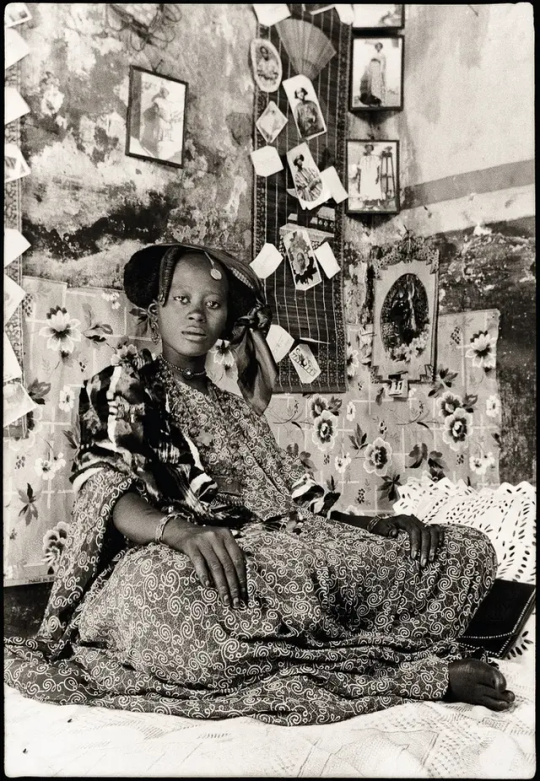


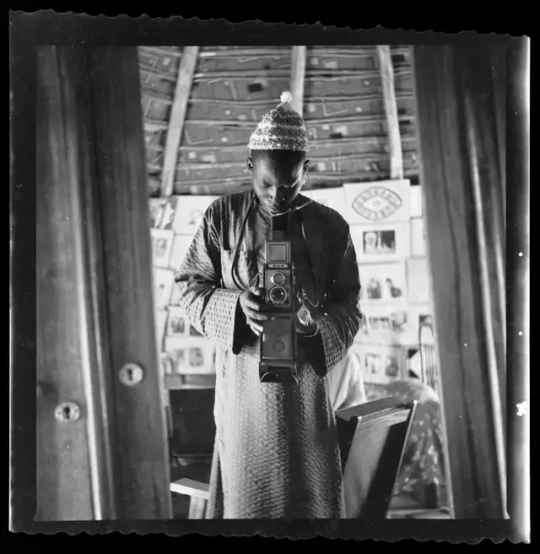
#cnn news#cnn#magazine#africa#my writing#panafrican#senegal#afrofuturism#africa fashion#photography#photographers on tumblr#rural photography#queer writers#african writers#fashion#african politics#writers#afri#women writers
1 note
·
View note
Text
LACOSTE is entering a new cycle and is unveiling #crocodileinside
LACOSTE is entering a new cycle and today is unveiling #crocodileinside.
Freedom of mind and movement, creativity, sportsmanship and tenacity, these values, initiated by René Lacoste, are also those of today’s most inspiring personalities. To embody this energy, the Lacoste polo has become the brand ambassador: an iconic product appropriated by each of our talents with ease and modernity.
Combining elegance of style and spirit, they have the #crocodileinside
Chloé Sevigny, American actress.
Coming from a conservative background, Chloé escaped to New York at the age of 18 and soon began a career as model and then actress. Thanks to her assured acting, she was later nominated for an Oscar and became an icon of the world-famous independent cinema
Alton Mason, American model.
Before becoming a world-famous model, Alton studied dancing and worked hard to achieve his ambitions, and was nominated for the BET Awards. Today he appears in fashion shows all over the world and poses for the camera of the greatest photographers.
Tenacious, creative and free minded, today’s icons have all become role models thanks to their talent. They have been photographed here by Oliver Hadlee Pearch, an English photographer who has the gift of showing the nature of each of the personalities he shoots.
Moha La Squale, French rapper.
Despite a difficult childhood, Moha, the free thinker, was spotted by the Belgian film director Barney Frydman, who advised him to enrol at the Cours Florent. It was on the rap scene that he became well-known and was able to free himself. His determination makes him a real crocodile
Rod Paradot, French actor.
Coming from a humble background, Rod did not originally intend to go into the film industry. Yet it was his first film that won him fame and a Cesar for the Most Promising Actor at the age of 19.
Coming from all over the world, with a look or a pose, they all express their own personality and special relationship with the LACOSTE polo. They combine elegance of style and spirit.
Serena Motola, Japanese actress and model.
At only 19, Serena Motola started modelling in her native Japan. Rapidly scouted, she appeared in several series for fashion magazines, became the subject of a photo exhibition and began a career in films in 2018.
Asap Nast, American rapper.
Asap Nast was born in Harlem (New York) and from an early age knew that he wanted a career in music. This LACOSTE fan, a crocodile under his skin, founded Asap Mob and quickly made himself known and acknowledged by his peers.
Noah Becker, German DJ.
Son of the legendary tennis player Boris Becker, Noah quickly became interested in music and fashion. He persisted in his research on electronic sounds and soon made a name for himself as a DJ
Salif Gueye, French-Senegalese dancer.
Salif gained his fame by performing in the streets of Paris. The social networks made him a star. His hard work has led him to dance all over the world.
Created in 1933 by René Lacoste, the polo soon became an essential piece in a chic and casual wardrobe worldwide. In 2019 it has found new energy through these young talents, and reaffirms its position as a world-famous symbol.
Ebonee Davis, American model and activist.
At just 24, Ebonee is an acknowledged model and activist. In particular she campaigns against the exclusion from opportunities given to women of colour and has taken part in a TED Talk. Her determination and her freedom of thought will not stop her before a real change has taken place within the fashion industry.
Sang Woo, Korean artist.
Sang has always preferred listening to his instinct and creative spirit rather than the rules given to him when he was growing up. He had to stand up to a high level of pressure within his family and has become a well-known multidisciplinary artist.
Jamie Bochert, American model.
Jamie was first spotted at the beginning of 2000 and soon became the figurehead of the androgynous style, now known as gender fluid. Throughout her career, she has been the muse of a number of designers and still continues to be a trendsetter.
Clara 3000, French DJ.
Before she was even 20, Clara Deshayes, alias Clara 3000, drew the attention of Pedro Winter. Within a few years, she made a name for herself on the electronic music scene and became a Parisian icon due both to her energetic compositions and various activities as an actress and ambassador of small ultra-trendy brands.
Novak Djokovic, Serbian tennis player
Considered as one of the greatest players in the history of tennis, Novak Djokovic shares the same values of Fair-Play, tenacity and freedom of movement as the founder of the company, René Lacoste.
These new images will be presented in the Lacoste shops worldwide and on Lacoste.com from 16 April 2019.
LACOSTE is entering a new cycle and is unveiling #crocodileinside published first on https://workbootsandshoes.tumblr.com/
0 notes